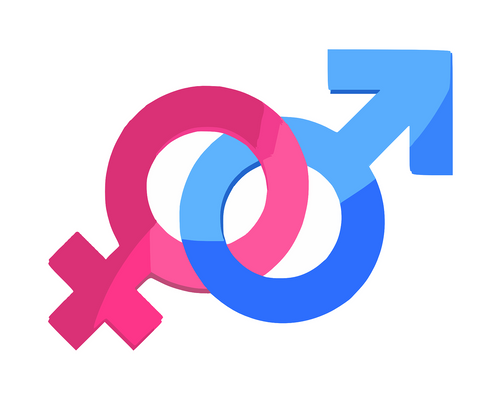3.2.1
Identities
The Social Construction of Self and Identity
The Social Construction of Self and Identity
Identity can be seen as a social construction. This means that it isn’t something that occurs naturally, but is socially caused and created by the socialisation process.
Types of Identity
Types of Identity
There are many forms of identity and sources from which people draw their identities.


Individual and personal identity
Individual and personal identity
- Woodward suggests that our individual identity is concerned with the basic question ‘Who am I?’, that is, how people define themselves, how they see themselves as different from other people, and their own understanding of who they really are.
- Individual/personal identity is what is known as ‘self-concept’ or what Mead described as the ‘inner me’, or ‘I’.


Collective identities
Collective identities
- These are identities shared by a social group and involve both personal and social identities but differ from both because it involves elements of choice.
- People actively chose to identify with a group and adopt an identity associated with it.


Example
Example
- Collective identities include being a fan of a particular music genre, a feminist or an environmental activist – all of which involve a high degree of personal choice.
Multiple and Stigmatised Identities
Multiple and Stigmatised Identities
People have several identities and may draw on more than one source. Other people can have a stigmatised identity (an identity that is seen as undesirable.)


Multiple identities
Multiple identities
- People have several identities and may draw on more than one source (e.g. social class, ethnicity, sexuality) or a combination.
- People may assert different selves in different circumstances, such as good student, good son/daughter or in their role as an employee.


Stigmatised or ‘spoiled’ identities
Stigmatised or ‘spoiled’ identities
- A stigma refers to some physical or social characteristic that is seen by society as abnormal, unusual, and demeaning or undesirable.
- Goffman has suggested that such characteristics can lead to a stigmatised identity, an identity that is seen as undesirable and prevents people from being fully accepted into society (e.g. the disabled).


Consequences
Consequences
- People with stigmatised identities often face negative consequences, such as being treated with fear or suspicion or refused employment.
- Having a stigmatised identity often means that any attempts to present an alternative impression will fail, resulting in a failed or ‘spoiled’ identity.
1Theory & Methods
1.1Sociological Theories
1.2Sociological Methods
2Education with Methods in Context
2.1Role & Function of the Education System
2.2Educational Achievement
2.3Relationships & Processes Within Schools
3Option 1: Culture & Identity
3.1Conceptions of Culture
3.2Identity & Socialisation
3.3Social Identity
3.4Production, Consumption & Globalisation
4Option 1: Families & Households
4.1Families & Households
4.2Changing Patterns
4.3The Symmetrical Family
4.4Children & Childhood
5Option 1: Health
5.1Social Constructions
5.2Social Distribution of Healthcare
5.3Provision & Access to Healthcare
5.4Mental Health
6Option 1: Work, Poverty & Welfare
6.1Poverty & Wealth
7Option 2: Beliefs in Society
7.1Ideology, Science & Religion
7.2Religious Movements
7.3Society & Religion
8Option 2: Global Development
8.1Development, Underdevelopment & Global Inequality
8.2Globalisation & Global Organisations
8.3Aid, Trade, Industrialisation, Urbanisation
9Option 2: The Media
9.1Contemporary Media
9.2Media Representations
10Crime & Deviance
10.1Crime & Society
10.2Social Distribution of Crime
Jump to other topics
1Theory & Methods
1.1Sociological Theories
1.2Sociological Methods
2Education with Methods in Context
2.1Role & Function of the Education System
2.2Educational Achievement
2.3Relationships & Processes Within Schools
3Option 1: Culture & Identity
3.1Conceptions of Culture
3.2Identity & Socialisation
3.3Social Identity
3.4Production, Consumption & Globalisation
4Option 1: Families & Households
4.1Families & Households
4.2Changing Patterns
4.3The Symmetrical Family
4.4Children & Childhood
5Option 1: Health
5.1Social Constructions
5.2Social Distribution of Healthcare
5.3Provision & Access to Healthcare
5.4Mental Health
6Option 1: Work, Poverty & Welfare
6.1Poverty & Wealth
7Option 2: Beliefs in Society
7.1Ideology, Science & Religion
7.2Religious Movements
7.3Society & Religion
8Option 2: Global Development
8.1Development, Underdevelopment & Global Inequality
8.2Globalisation & Global Organisations
8.3Aid, Trade, Industrialisation, Urbanisation
9Option 2: The Media
9.1Contemporary Media
9.2Media Representations
10Crime & Deviance
10.1Crime & Society
10.2Social Distribution of Crime
Unlock your full potential with Seneca Premium
Unlimited access to 10,000+ open-ended exam questions
Mini-mock exams based on your study history
Unlock 800+ premium courses & e-books




